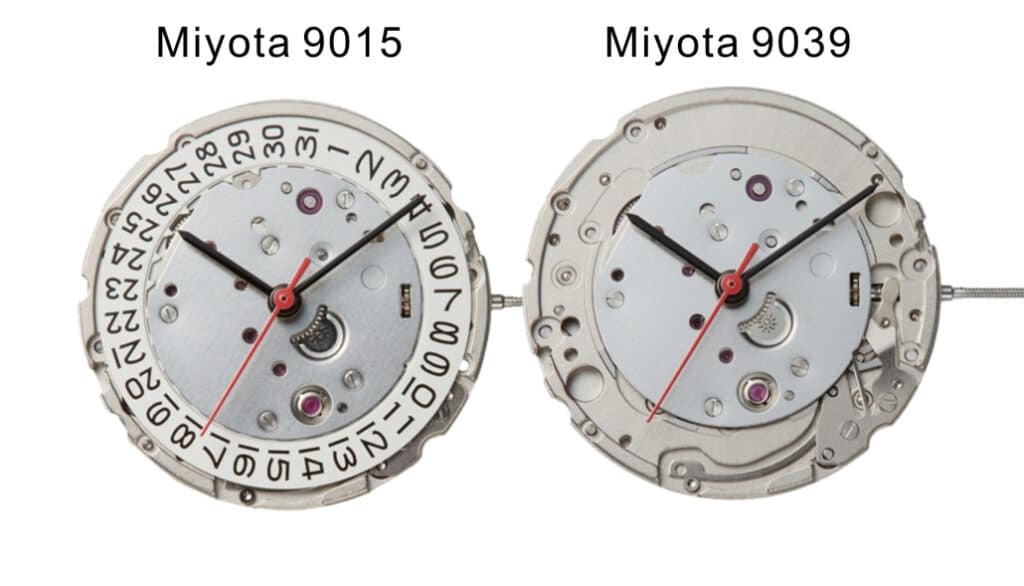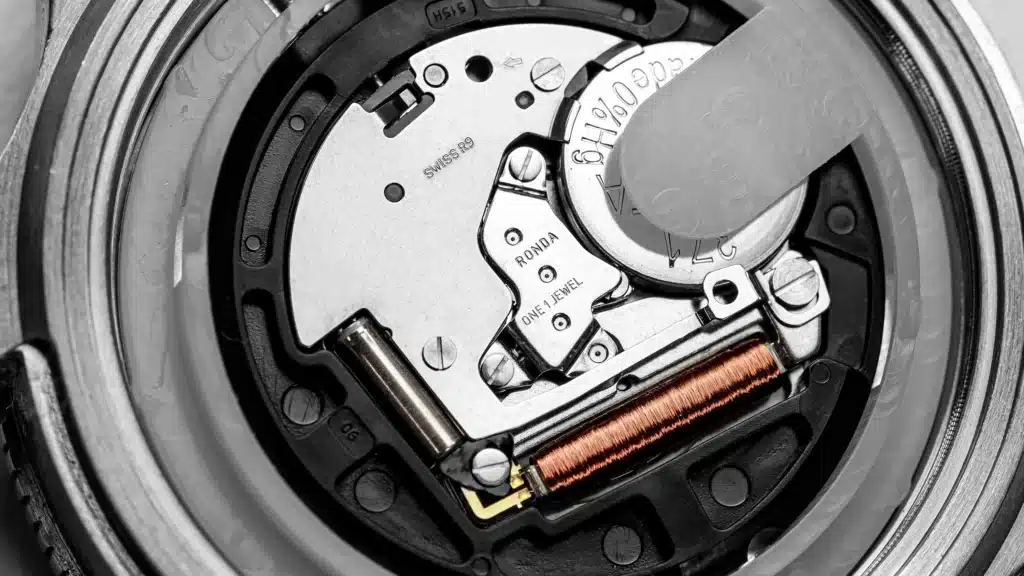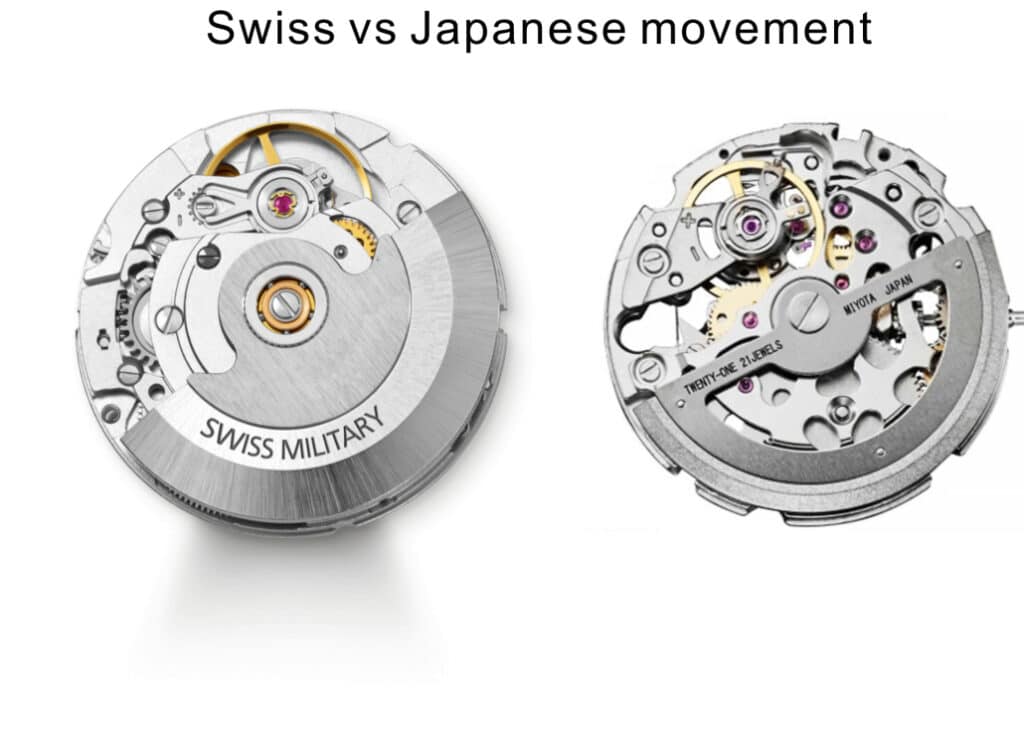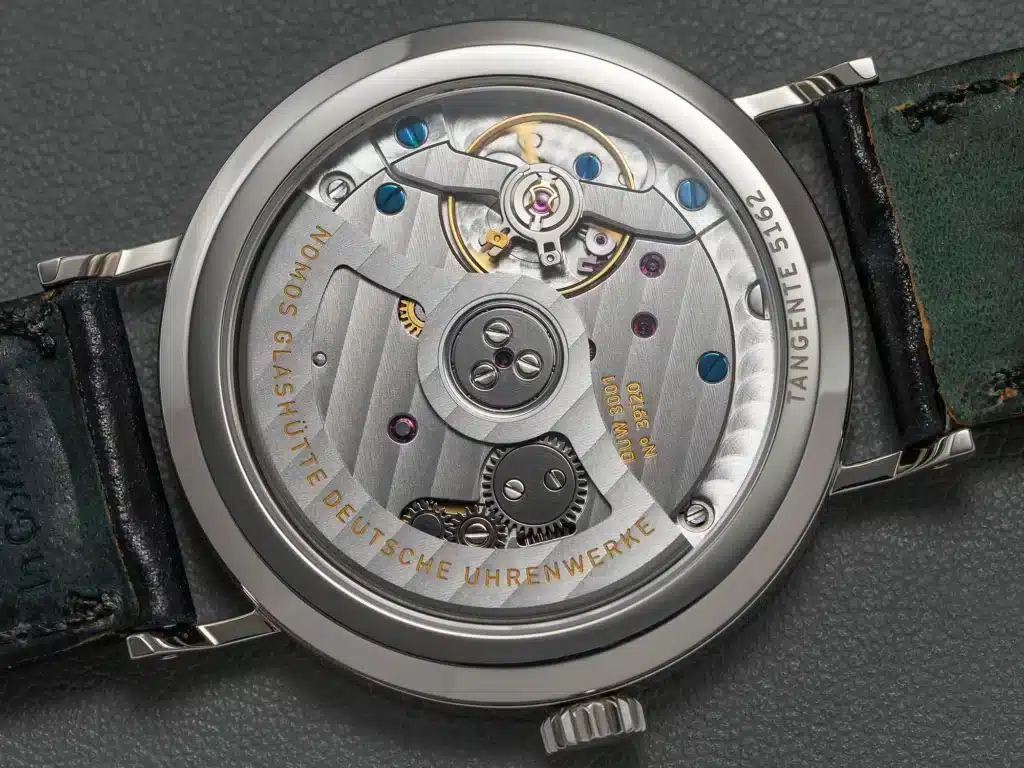What are you looking for?
Search
Comparing Watch Movements: China vs. Miyota (Japanese) vs. Swiss (ETA)
Any timepiece’s movement—that complex technology meant to keep time accurately—is its essence. Understanding the variations between many movements is essential for appreciating the artistry and making wise purchase selections for collectors and watch enthusiasts.
This article will discuss:
- The main features of Chinese watch movements
- The main features of Miyota (Japanese) watch movements
- The main features of Swiss (ETA) watch movements
These discussions will be accompanied by a detailed comparison to underline their advantages and shortcomings.
Table of Contents
Accuracy and Precision
Chinese Movements
Chinese watch movements have made significant progress recently and provide relatively accurate time at a reasonable cost. Renowned for their efforts are companies like Seagull and Peacock.
- Progress: Significant advancements in recent years.
- Cost: Offers a reasonable price point for watch enthusiasts.
- Accuracy: Generally lags behind Japanese and Swiss equivalents.
- Quality Control: Less strict procedures contribute to variances in accuracy.
These movements are a good starting point for those looking to explore the world of watches without a significant investment.
Miyota Movements
Reliable and exact movements are well-known from Miyota, a Citizen Watch Co.-owned subsidiary.

Celebrated for their accuracy—often falling between ±10 and ±30 seconds every day—models such as the 9015 and 821A. Their great accuracy results from the application of strict quality control procedures and modern technologies.
Swiss (ETA) Movements
Many times regarded as the gold standard for accuracy and quality are Swiss ETA movements.
- Accuracy: Renowned for their excellent timekeeping, often retaining accuracy within ±4 to ±10 seconds daily.
- Calibers: Includes famous models like the ETA 2824-2.
- Heritage: The Swiss watchmaker’s history emphasizes exact engineering and thorough testing.
- Performance: Guaranteed outstanding performance through meticulous craftsmanship.
These attributes underscore why Swiss ETA movements are celebrated in the world of horology.
Durability and Longevity
Chinese Movements
Chinese movements still trail Japanese and Swiss movements even if they have become more durable. Sometimes, less lifetime and more frequent need for maintenance follow from the materials chosen and assembly quality.
Miyota Movement
The toughness and lifetime of Miyota motions are well-known. Built from premium materials and tested extensively, they may endure decades with correct care. The brand’s dedication to durability guarantees that its motions will resist daily wear and tear.
Swiss (ETA) Movements
ETA movements are a byword for robustness. Top-quality materials and exact assembly procedures used by Swiss watchmakers produce movements capable of spanning decades.

The lifetime of these movements is evidence of the precise artistry and quality control that define Swiss watches.
Innovation and Technology
Chinese movements
Modern technology has been progressively included in Chinese watch movements by their producers. Shared innovations, including improved shock resistance and anti-magnetic characteristics, include ones like In terms of cutting-edge technology, they still lag behind Japanese and Swiss movements nonetheless.
Miyota Movements
Miyota always incorporates cutting-edge technologies into their moves. Many of their models have standard features, including enhanced stress absorption systems and high-frequency oscillation. The brand’s constant innovation guarantees that its motions stay competitive in the worldwide market.
Swiss (ETA) Movements
Horological innovation leads mostly from Swiss ETA movements. Modern technologies include very effective winding systems, and silicon escapements abound in them. The focus on research and development by the Swiss watch sector maintains ETA movements ahead of their curve.
Manufacturing and Assembly Quality
Chinese Movements
Large-scale fabrication of Chinese watch movements occasionally results in variations in assembly quality. Although there are excellent Chinese movements accessible, manufacture and assembly’s general accuracy may differ.
Miyota Movements
Reliability and accuracy of Miyota’s production technique are well-known. Strict quality control procedures applied to their movements guarantee constant assembly quality.

Every Miyota movement clearly shows the Japanese dedication to excellence and meticulous nature.
Swiss (ETA) Movements
Unmatched accuracy shapes Swiss ETA movements. Swiss watchmakers guarantee that every movement is painstakingly created by following stringent criteria. The end effect is an unparalleled degree of production and assembly quality in the sector.
Availability and Cost of Replacement Parts
Chinese Movements
Generally speaking, Chinese movements have pretty cheap and easily accessible replacement parts. The fluctuation in quality, however, might make it difficult to get components exactly that fit the original requirements.
Miyota Movements
Because of a robust supply chain, Miyota motions gain from quickly available and relatively cost-replacement components. The global presence of the brand guarantees the availability of components in various areas, therefore simplifying long-term maintenance.
Swiss (ETA) Movement
Though they might be more costly than Chinese and Japanese equivalents, ETA movements also offer outstanding availability of replacement parts. The more significant cost represents the better quality and accuracy of the parts, therefore guaranteeing that repairs preserve the original performance of the watch.
Power Reserve Capabilities

Chinese Movements
Chinese watch movements usually provide 40 to 60-hour power reserves. Although sufficient, they do not always align with the higher power reserves observed in some Japanese and Swiss motions.
Miyota Movements
Adequate power reserves are a well-known feature of Miyota motions. Models like the Miyota 9015 provide up to 42 hours of battery reserve, therefore guaranteeing that the watch keeps working even when not worn for a few days.
Swiss (ETA) Movements
Swiss ETA movements may feature really remarkable power reserves. For instance, the ETA 2824-2 provides a power reserve of up to 42 hours. Some high-end Swiss movements even show the excellent engineering and efficiency of these calibers, even beyond this.
Craftsmanship and Finishing
Chinese Movements
Chinese movements can need more sophisticated intricacies present in Japanese and Swiss movements, even when their workmanship and finishing have improved. Some more expensive Chinese models, meanwhile, are starting to highlight improved finishing methods.
Miyota Movements
Miyota’s movements highlight great craft and finishing. The exact, tidy construction and the use of excellent materials clearly show attention to detail. Miyota’s ending is fantastic, even if his style could be more refined than other Swiss moves.
Swiss (ETA) Movements
Swiss ETA movements best capture artistry and finishing. Using quality materials, hand-finishing methods, and meticulous attention to detail produces movements as beautiful as they are practical. One of the main distinctions in the luxury watch industry is the degree of artistic expression in Swiss movements.
Environmental Impact

Chinese Movements
Production of Chinese watch movements has different effects on the surroundings. Although some companies are starting to follow more eco-friendly policies, the sector still has potential for development generally. The excellent manufacturing volume might cause significant environmental damage.
Miyota Movements
Miyota has advanced sustainable manufacturing techniques’ use. The brand stresses using eco-friendly products and energy economy. Still, the industry’s whole environmental influence is a factor of concern.
Swiss (ETA) Movements
Including ETA, the Swiss watch market gives sustainability great importance. Swiss companies invest in environmentally friendly technology and follow tight environmental rules most of the time. More often used sustainable materials and renewable energy sources help to lower the general ecological effect.
Conclusion
Within the field of watch movements, Chinese, Miyota (Japanese), and Swiss (ETA) each have unique benefits and drawbacks.
Chinese Movements
- With decent accuracy and good quality, Chinese Movements provide watch enthusiasts with a reasonably priced starting point.
- Chinese movements are a good alternative for new collectors or those looking for reasonably priced solutions.
Miyota Movements
- With dependable precision, durability, and creative features, Miyota Movements balance cost and performance.
- For someone seeking a dependable, mid-range solution with a nice mix of cost and quality, Miyota movements are perfect.
Swiss (ETA) Movements
- Swiss ETA Movements are the height of accuracy, artistry, and creativity; their more significant expense is justified by superb quality and lifetime.
- Swiss ETA movements are the most excellent option for discriminating collectors looking for the finest in horological brilliance.


